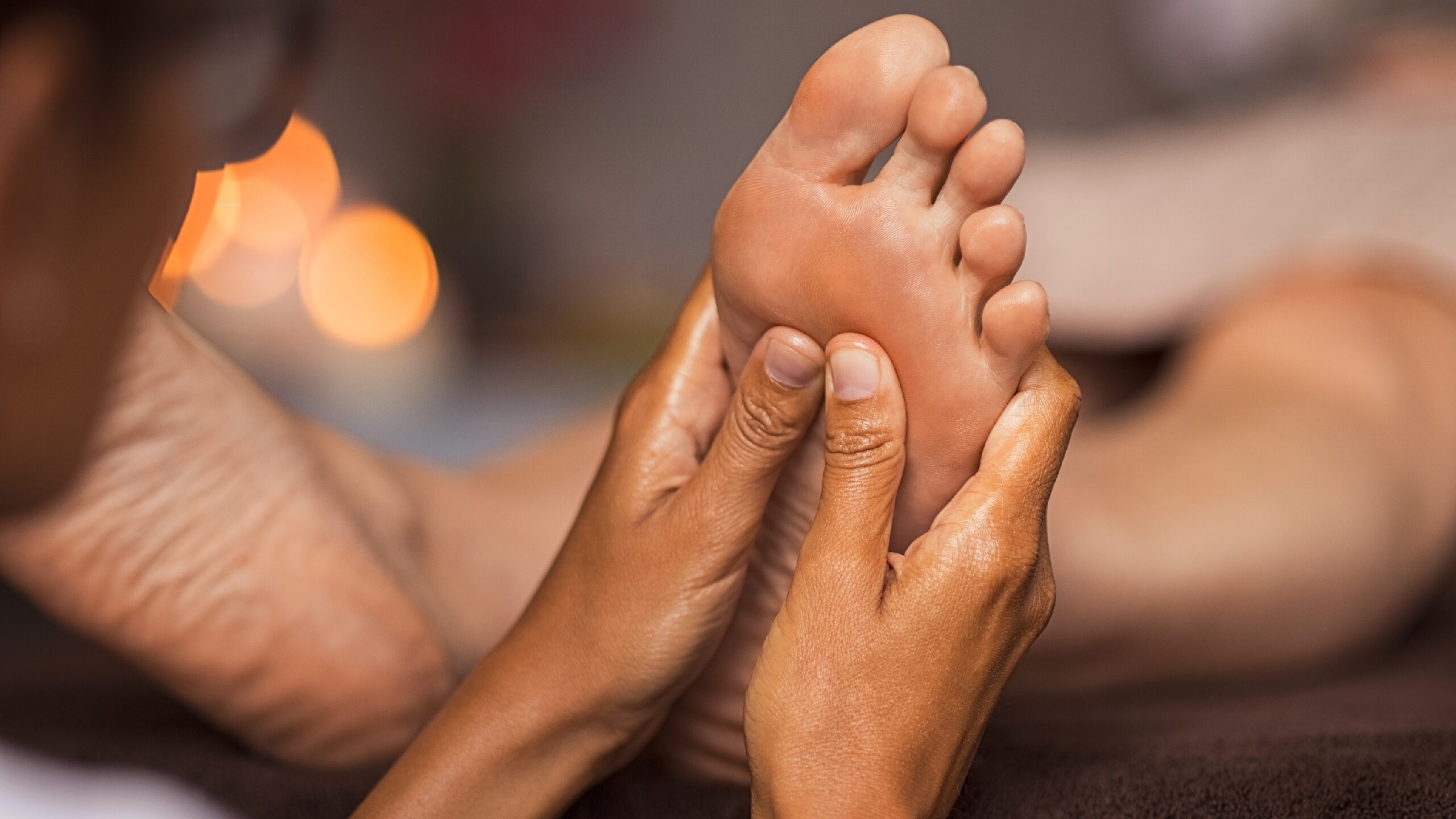
UCL Thumb Injuries: Navigating Diagnosis, Treatment, and Recovery in Orthopedics
February 12, 2024
Fasciotomy: A Lifesaving Procedure for Treating Compartment Syndrome
April 2, 2024Extensor Tendonitis: Navigating Through Recovery and Maintaining Foot Health
Extensor Tendonitis is a common condition that affects the tendons on the top of the foot. It can be caused by a variety of factors, including overuse, improper footwear, and biomechanical issues. If you’re experiencing pain or discomfort in the top of your foot, understanding the causes and symptoms of Extensor Tendonitis is the first step towards recovery and maintaining foot health.
Understanding Extensor Tendonitis: An Overview of Causes and Symptoms
Extensor Tendonitis occurs when the tendons that connect the muscles on the front of the leg to the bones in the foot become inflamed or irritated. This can happen due to repetitive activities that strain these tendons, such as running or jumping. Wearing shoes that don’t provide enough support or have a tight toe box can also contribute to the development of this condition.
The most common symptom of Extensor Tendonitis is pain on the top of the foot. You may feel a sharp or dull ache that worsens with activity or when you try to bend your toes upwards. Swelling and tenderness may also be present. If you suspect you have Extensor Tendonitis, it’s essential to seek an accurate diagnosis from Center For Specialty Care.
It is important to note that while Extensor Tendonitis is commonly associated with overuse injuries, it can also be caused by sudden trauma or impact to the foot. Athletes who participate in sports that involve quick, explosive movements like sprinting or basketball are particularly susceptible to this type of injury. Additionally, individuals with flat feet or high arches may be more prone to developing Extensor Tendonitis due to the altered biomechanics of their feet.
When it comes to treatment, rest is crucial in allowing the inflamed tendons to heal. Ice therapy and elevation can help reduce pain and swelling. Physical therapy exercises that focus on strengthening the muscles around the foot and ankle can also aid in recovery and prevent future recurrences of Extensor Tendonitis.
Initial Steps: The Importance of Accurate Diagnosis
When it comes to Extensor Tendonitis, an accurate diagnosis is crucial for proper treatment and recovery. Many conditions can cause foot pain, so it’s important to consult with a healthcare professional at Center For Specialty Care who specializes in foot and ankle injuries. They will perform a thorough physical examination and may order imaging tests, such as an X-ray or MRI, to rule out other potential causes.
It’s worth noting that accurate diagnosis not only helps in determining the appropriate treatment but also plays a significant role in preventing further complications. Misdiagnosis or delayed diagnosis can lead to prolonged pain and discomfort, potentially worsening the condition over time. Therefore, seeking timely and accurate diagnosis is paramount in managing Extensor Tendonitis effectively.
Once diagnosed, a treatment plan can be developed to address your specific needs and goals. Treatment options may range from conservative measures such as rest, ice, compression, and elevation (RICE protocol) to more invasive interventions like corticosteroid injections or, in severe cases, surgical repair. Physical therapy and specialized exercises may also be recommended to improve strength and flexibility in the affected area, aiding in the recovery process.
Extensor Tendonitis Treatment: Finding the Right Approach for You
Treating Extensor Tendonitis often involves a multi-faceted approach, combining various strategies to reduce pain, promote healing, and prevent future recurrence. The treatment plan may include:
- Rest and Immobilization: It’s essential to give your foot time to heal by avoiding activities that exacerbate the pain. At Center For Specialty Care, we may recommend wearing a brace or splint to immobilize the foot and relieve strain on the tendons.
- Ice and Heat Therapy: Applying ice packs or using cold therapy devices can help reduce inflammation and alleviate pain. Heat therapy, such as warm compresses, may also be beneficial in promoting blood flow and relaxation in the affected area.
- Physical Therapy: Working with a physical therapist can provide targeted exercises and stretches to strengthen the muscles and tendons in the foot. This can help improve flexibility and prevent future injury.
Additionally, we may suggest modifications to your footwear and the use of orthotic inserts to provide better support and relieve pressure on the affected tendons.
The Role of Rest and Ice in Extensor Tendonitis Recovery
Rest is a fundamental component of recovering from Extensor Tendonitis. It allows the inflamed tendons to heal and prevents further aggravation. Avoiding activities that cause pain is essential during the recovery phase.
In addition to rest, ice therapy is another valuable tool in the recovery process. Applying ice packs to the affected area for 15-20 minutes at a time, several times a day, can help reduce inflammation and alleviate pain. Make sure to protect your skin by wrapping the ice pack in a thin cloth or towel before applying it.
Physical Therapy: Exercises to Strengthen and Stretch
Physical therapy plays a vital role in the rehabilitation of Extensor Tendonitis. One of our licensed physical therapist at Center For Specialty Care can guide you through a tailored exercise program that focuses on strengthening and stretching the muscles and tendons in your foot.
Suggested exercises may include:
- Toe Curls: Sitting on a chair, place a towel on the floor and try to grab it with your toes. Hold for a few seconds and release. Repeat this exercise several times.
- Ankle Alphabet: Trace the letters of the alphabet with your toes, making sure to move your ankle through its full range of motion.
- Eccentric Exercises: These exercises involve slowly lowering your foot and toes against resistance. They can help strengthen the tendons and improve their capacity to absorb forces.
It’s important to follow your physical therapist’s instructions and gradually increase the intensity and duration of your exercises to avoid overloading the tendons. Consulting a professional will ensure that you’re performing the exercises correctly and safely.
Footwear and Orthotics: Supporting Your Feet for Better Health
The right footwear can make a significant difference in managing and preventing Extensor Tendonitis. When selecting shoes, look for those that provide adequate arch support, cushioning, and a wide toe box to allow your toes to move freely. Avoid high heels and shoes that are too tight or narrow.
In some cases, your healthcare provider at Center For Specialty Care may recommend the use of orthotic inserts. These inserts can help correct biomechanical issues that contribute to Extensor Tendonitis and provide additional support and stability for your feet.
Extensor Tendonitis and Activity Modification: Tips for a Pain-Free Lifestyle
While recovering from Extensor Tendonitis, it is important to modify your activities to avoid further strain on the tendons. Here are some tips for a pain-free lifestyle:
- Avoid high-impact activities like running or jumping, as they can exacerbate the pain.
- Consider low-impact exercises such as swimming or biking to stay active without putting stress on the injured tendons.
- Gradually return to your regular activities and gradually increase the intensity to allow your tendons to adapt and become stronger.
- Listen to your body and rest when you feel pain or discomfort. Pushing through the pain can lead to further injury and delay your recovery.
By making these modifications, you can continue to stay active while giving your tendons the time they need to heal and regain strength.
Managing Pain: Over-the-Counter Solutions and When to Seek Further Help
If you’re experiencing mild to moderate pain from Extensor Tendonitis, over-the-counter pain relievers such as non-steroidal anti-inflammatory drugs (NSAIDs) can help alleviate discomfort and reduce inflammation. However, it’s important to follow the recommended dosages and call Center For Specialty Care if the pain persists or worsens.
In some cases, conservative treatments may not provide adequate relief, and further intervention may be necessary. If your symptoms are persistent, severely affecting your daily activities, or not improving despite proper care, we may suggest additional options such as corticosteroid injections or surgical intervention.
Preventing Recurrence: Maintaining Foot Health Post-Recovery
Once you’ve recovered from Extensor Tendonitis, it’s essential to take steps to prevent future episodes. Here are some tips for maintaining foot health:
- Continue to wear footwear that provides proper support and fits well. Replace worn-out shoes regularly to ensure optimal cushioning and shock absorption.
- Stretch and strengthen the muscles and tendons in your feet regularly.
- Gradually increase the intensity and duration of your physical activities to avoid overloading the tendons.
- Listen to your body and address any pain or discomfort promptly to prevent it from progressing into a more severe problem.
By incorporating these habits into your daily routine, you can significantly reduce the risk of future Extensor Tendonitis episodes and maintain overall foot health.
When Surgery Is an Option: Understanding the Procedures and Outcomes
In most cases, Extensor Tendonitis can be successfully treated with conservative measures. However, in rare instances, surgery may be necessary. Surgical intervention may be considered when other treatments have failed or for severe cases that significantly impact daily life.
The specific surgical procedures for Extensor Tendonitis vary depending on the individual and the severity of the condition. Examples of surgical options may include tendon debridement, tendon lengthening, or tendon transfer.
Your healthcare provider at Center For Specialty Care will discuss the potential benefits, risks, and expected outcomes of surgery, helping you make an informed decision based on your unique circumstances.
Conclusion
Extensor Tendonitis can be a frustrating and painful condition, but with the right approach and diligent care, you can navigate through recovery and maintain foot health. Understanding the causes and symptoms, seeking an accurate diagnosis, and following a comprehensive treatment plan will greatly increase your chances of successful recovery and reduce the risk of recurrence. Remember to listen to your body and consult with Center For Specialty Care if you have any concerns or questions. With proper care, you’ll be back on your feet, pain-free, and ready to enjoy your favorite activities once again.
At the heart of your journey towards overcoming Extensor Tendonitis, Center for Specialty Care stands as your unwavering ally. Renowned for our patient-centered approach, we are dedicated to ensuring that every individual receives the comprehensive care and attention they deserve. Our team of specialized healthcare professionals is deeply committed to providing a comprehensive treatment experience, tailored to meet the unique needs of each patient.




